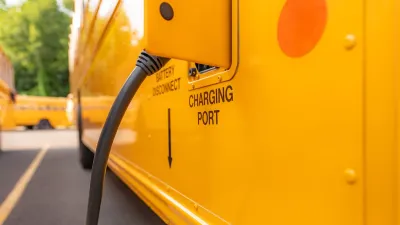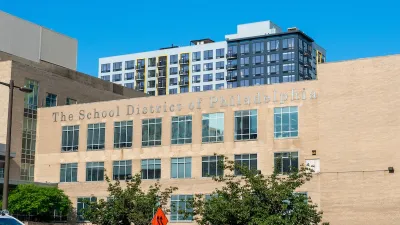The American Academy of Pediatrics has released a new report focusing on the effect of the built environment on children's health. Access to parks, the ability to walk to school, and opportunities for 'incidental exercise.'
From the introduction:
"Suburbanization and decisions about school siting are important determinants of why children now live so far from school. Historically, small neighborhood schools served as "anchors" within the community and places for after-school programs, for social and recreational gathering, and as disaster shelters.59 However, after the 1950s, many states established policies on the size and location of school buildings that influenced school siting. According to those guidelines, to receive state funding, schools had to have a minimum acreage (eg, elementary schools needed to be on at least 10 acres), and more students translated to larger required school-grounds size (eg, an extra acre for every 100 students). Because untapped acreage sufficient to meet these standards is most often at the edge of an urban area, neighborhood schools (typically only 2–8 acres in size) were frequently demolished or closed in favor of "big-box schools" at the outskirts of cities. Recommendations on school size from the Council of Education Facilities Planners International (CEFPI) were revised in 200461 and no longer recommend a minimum acreage. There is increasing interest in supporting smaller schools, but change to policies on school land size occurs slowly. It is also important to acknowledge that there may be some trade-offs to consider regarding school size and physical activity. There is some research suggesting that larger school campuses, buildings, and play areas may promote youth physical activity during the school day.
Distance is, of course, not the only barrier preventing children from walking or biking to school. A recent nationally representative study found that even among children who lived within 1 mile of school, less than half walk to school even 1 day/week."
FULL STORY: The Built Environment: Designing Communities to Promote Physical Activity in Children

Alabama: Trump Terminates Settlements for Black Communities Harmed By Raw Sewage
Trump deemed the landmark civil rights agreement “illegal DEI and environmental justice policy.”

Planetizen Federal Action Tracker
A weekly monitor of how Trump’s orders and actions are impacting planners and planning in America.

The 120 Year Old Tiny Home Villages That Sheltered San Francisco’s Earthquake Refugees
More than a century ago, San Francisco mobilized to house thousands of residents displaced by the 1906 earthquake. Could their strategy offer a model for the present?

Indy Neighborhood Group Builds Temporary Multi-Use Path
Community members, aided in part by funding from the city, repurposed a vehicle lane to create a protected bike and pedestrian path for the summer season.

Congestion Pricing Drops Holland Tunnel Delays by 65 Percent
New York City’s contentious tolling program has yielded improved traffic and roughly $100 million in revenue for the MTA.

In Both Crashes and Crime, Public Transportation is Far Safer than Driving
Contrary to popular assumptions, public transportation has far lower crash and crime rates than automobile travel. For safer communities, improve and encourage transit travel.
Urban Design for Planners 1: Software Tools
This six-course series explores essential urban design concepts using open source software and equips planners with the tools they need to participate fully in the urban design process.
Planning for Universal Design
Learn the tools for implementing Universal Design in planning regulations.
Clanton & Associates, Inc.
Jessamine County Fiscal Court
Institute for Housing and Urban Development Studies (IHS)
City of Grandview
Harvard GSD Executive Education
Toledo-Lucas County Plan Commissions
Salt Lake City
NYU Wagner Graduate School of Public Service





























